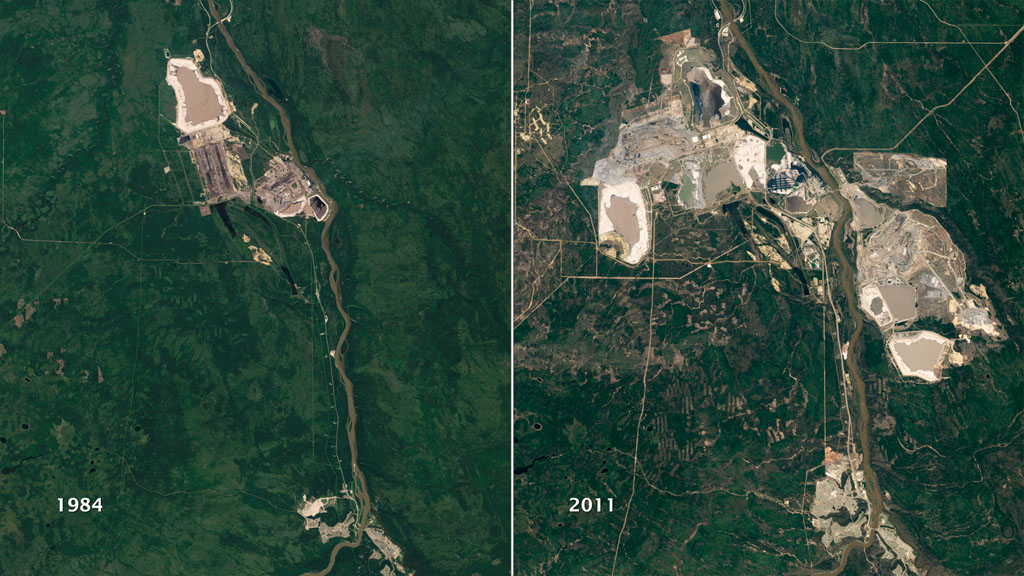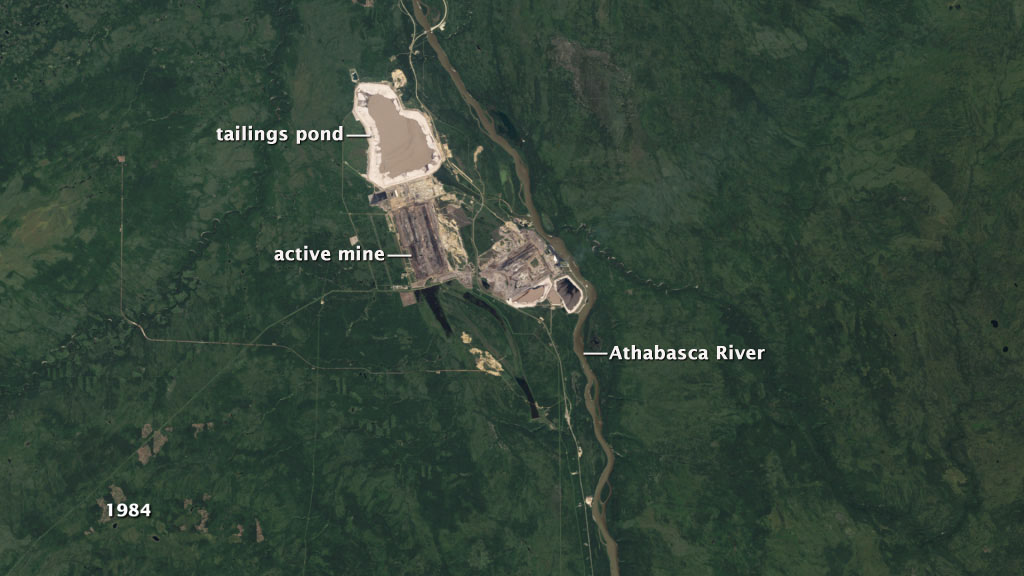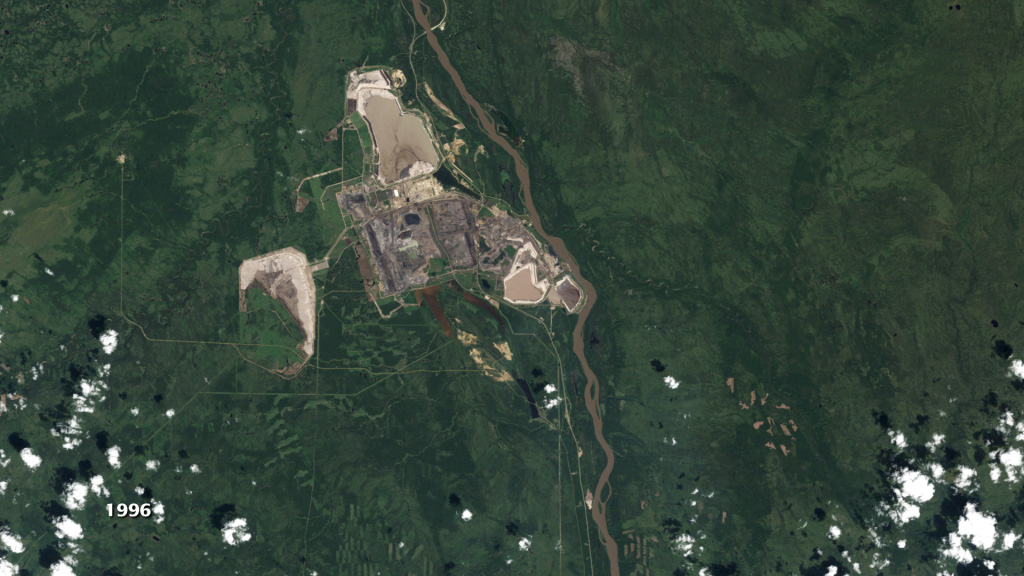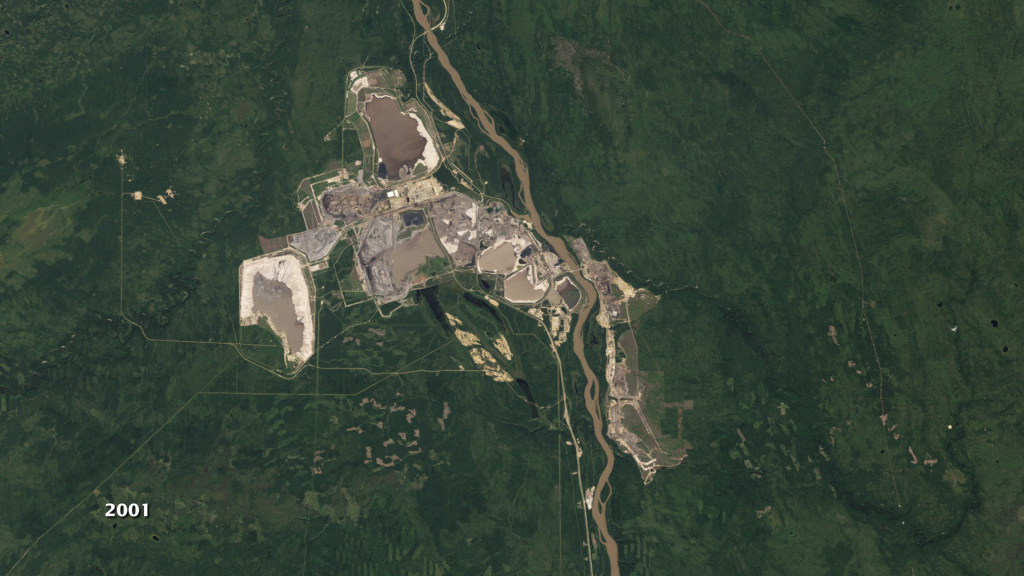Earth
ID: 10838

With the rising cost of oil in the past decade, mining oil sands has become a profitable endeavor. Oil sands consist of sand, clay and other minerals coated in water and thick, viscous oil called bitumen (also known as asphalt). To get usable oil from the sands, producers have to separate the bitumen from the sand using very hot water, and then process the bitumen into crude oil. This process is expensive, energy-intensive and rough on the local environment. Perhaps nowhere is it easier to see the growth of the oil sands industry than along the Athabasca River in Alberta, Canada. The region holds the world's largest known oil sands deposit, with a capacity to produce 174.5 billion barrels of oil—2.5 million barrels of oil per day for 186 years. Where the sands are close to the surface, they are extracted in large open pit mines. Captured by USGS-NASA Landsat satellites between 1984 and 2011, these images show the expansion of the pit mines.




Mining Canada's Oil Sands





For More Information
Story Credits
Lead Visualizer/Animator:
Robert Simmon (Sigma Space Corporation)
Lead Writer:
Holli Riebeek (Sigma Space Corporation)
Robert Simmon (Sigma Space Corporation)
Lead Writer:
Holli Riebeek (Sigma Space Corporation)
Please give credit for this item to:
NASA Goddard Space Flight Center
Image credit goes to Rob Simmon and Jesse Allen, NASA's Earth Observatory
NASA Goddard Space Flight Center
Image credit goes to Rob Simmon and Jesse Allen, NASA's Earth Observatory
Short URL to share this page:
https://svs.gsfc.nasa.gov/10838
Keywords:
SVS >> App
NASA Science >> Earth
https://svs.gsfc.nasa.gov/10838
Keywords:
SVS >> App
NASA Science >> Earth







